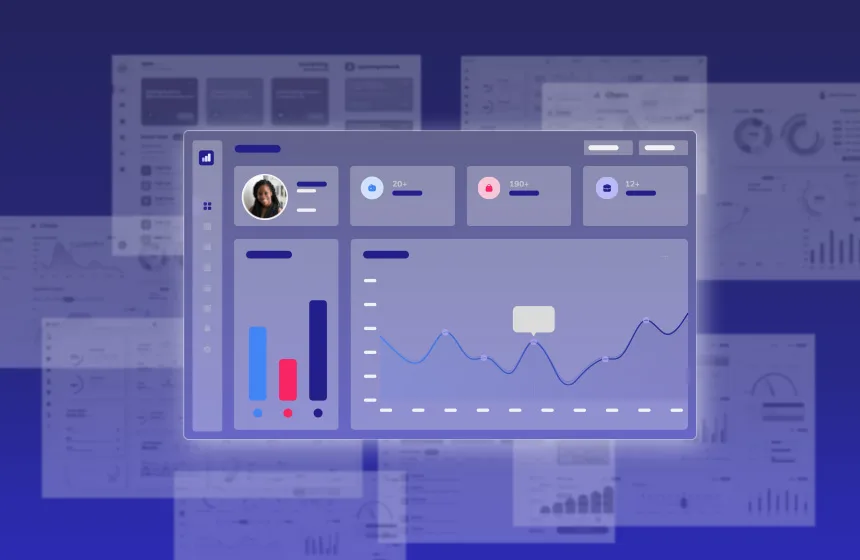Accelerate deals and increase win rates with the leading enterprise AI demo platform.
Product Demos and Beyond: A Cornerstone of Modern GTM

September 24, 2025
Table of Contents
How Gartner Analyst David Yockelson is Reimagining Demos in 2025.
Most companies are still selling like it’s 2015. Modern B2B buyers have fundamentally different expectations though, especially when it comes to how they interact with your product.
At Reprise’s Demos Reimagined ’25 conference, David Yockelson, Distinguished VP Analyst at Gartner, laid out a compelling case for demos being treated as the most important asset in your GTM motion. Prioritize product experiences, he argued, or risk losing to competitors who better understand how buyers actually want to buy.
The Hidden Cost of Demo Friction
Here’s the paradox every B2B GTM team faces: “Get a demo” consistently performs as the top-converting CTA on websites, yet it creates one of the most frustrating experiences for buyers. Why? Because you’re forcing prospects into a sales process before they’re ready.
When you gate demos behind form fills and forced scheduling, you’re essentially telling buyers: “You can’t understand our value until you give us your time and personal information.” This creates three critical problems:
- You lose 90% of interested prospects according to Yockelson’s research. These may be excellent prospects, but they aren’t ready for a sales conversation quite yet.
- You waste sales resources on unqualified leads who just wanted to look at your product.
- You extend sales cycles by adding unnecessary friction at the moment of highest interest.
Interactive demos solve this by letting buyers self-qualify while giving you rich behavioral data about their interests and use cases.
Why Ungating Demos Transforms Your Funnel
The most important advice from Yockelson? Don’t gate your demos upfront. This feels wrong to most GTM teams who’ve been trained to capture leads at every touchpoint, but here’s why it’s a sound strategy:
Ungated demos create compound engagement. When prospects can immediately access value without friction, they spend more time exploring your product, visit more pages, and return more frequently. This behavioral data is far more valuable than a cold email address because it tells you exactly what features and use cases resonate.
Quality over quantity transforms your pipeline. Yes, you’ll capture fewer raw leads, but the ones you do get are significantly more qualified. Yockelson’s research shows 36% of interactive demo leads become qualified opportunities.
Trust accelerates deal velocity. By giving value before asking for anything in return, you signal confidence in your product and respect for the buyer’s time. This trust becomes crucial when deals run into turbulence later in the cycle.
The Strategic Power of Multiple Demo Experiences
Don’t think about interactive demos as a single asset. Think about them as a content ecosystem that serves different buyer needs at different stages:
Executive demos should be high-level and outcome-focused, showing business impact in under 5 minutes. Use lower fidelity but crystal-clear value propositions.
Technical demos need hands-on exploration with higher fidelity, letting evaluators dig into features that matter for implementation.
Use case demos should be hyper-specific to industries or roles, using synthetic data that mirrors the prospect’s actual environment.
This multi-demo approach works because B2B buying teams average 6-10 people, each with different priorities and technical comfort levels. A single demo trying to serve everyone serves no one well.
AI: Your Demo Personalization Superpower
The most exciting development in interactive demo technology is AI’s ability to create contextually relevant experiences at scale. Instead of manually building 50 different demos for 50 different use cases, AI can quickly generate custom content, data, and scenarios.
Imagine a prospect from healthcare viewing your analytics platform and seeing patient outcome data, while someone from retail sees inventory optimization metrics — all from the same base demo.
This isn’t science fiction. It’s happening now, and companies using AI-powered demo personalization are seeing 40-60% higher engagement rates than static alternatives.
Getting Started: Your 90-Day Demo Strategy
Month 1: Audit and map. Identify where prospects drop off in your current funnel and map your buyer journey to find the highest-impact spots for product experiences.
Month 2: Start simple. Create one ungated, 10-click demo focused on your biggest pain point or most popular use case. Don’t try to boil the ocean.
Month 3: Measure and expand. Track engagement, conversion, and deal velocity changes. Use this data to build your business case for expanding the program.
The key is thinking cross-functionally from day one. Interactive demos impact marketing conversion, sales qualification, and customer success onboarding. Get alignment early on shared metrics and success definitions.
The Bottom Line
Interactive demos aren’t just a nice-to-have, they’re quickly becoming table stakes for competitive B2B sales. Buyers consistently rate them as the most useful content on vendor websites, and companies implementing them well are seeing 30-40% shorter sales cycles with higher close rates.
The question isn’t whether to adopt interactive demo technology, but how quickly you can implement it before your competitors do. In a world where buyers need to try before they buy, the companies that remove friction and provide the richest product experiences will be the winners.
Want to watch David’s full session from Demos Reimagined? You can access the recording here.






